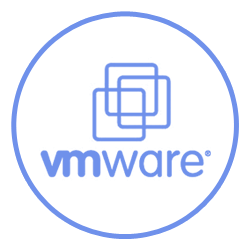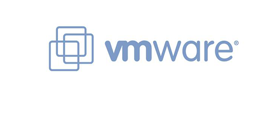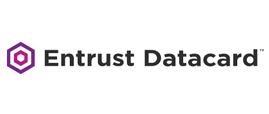-
Welcome to My Website
This is a text box. Write your own content here. This is an excellent place for you to add a paragraph.
Netway Support Center
เราพร้อมบริการคุณ ตลอด 24 ชั่วโมง
Payment & Invoices
Products Knowledge










Zendesk




Other Cloud Products
Technical Knowledge
Website/Install Application & FTP
Linux Technical Knowledge
Windows Technical Knowledge
Database
Blog list (8)
How to use Installatron in Direct Admin
How to use Installatron in Direct Admin This demo assumes you've already logged in to Direct Admin Scroll down... Now let's learn how to use Installatron Click the Installatron link here This is the main page for Installatron Installatron is an auto-installer program, that allows you to install dozens of free scripts and programs, with just a few clicks The scripts available for installation are listed on the right side of this page, here Scroll down to see the complete list of available programs..... That's quite a long list! There are currently over 50 programs availabe through Installatron Let's install the b2evolution blog.... click here Now let's go through an example..... let's install one of the scripts into our account Scroll down... To install b2evolution, click New Install This is the b2evolution page, and contains information about the script we're going to install Scroll down... Enter an admin password here Take note that this installation requires a MySQL database, so make sure one is available to you before proceeding Scroll down... To agree to the script's Terms of usage, click this checkbox Click Install when ready Scroll down... Click Configure Scroll down... To complete the installation, click GO! Scroll down... That's it! b2evolution has been installed To begin using b2evolution, you can login by clicking here Close this window, and return to the Installatron screen Click Finalize Click OK You can also administer your b2evolution installation by clicking here Click the Home icon here This is the end of the tutorial. You now know how to use Installatron to install dozens of free scripts into your account. Remember that in most cases, you'll need to make sure you have 1 available MySQL database for successful script installations
Managing MySQL databases with phpMyAdmin in Direct Admin
Managing MySQL databases with PHPMyAdmin in Direct Admin Click the MySQL Management link This demo assumes you've already logged in to Direct Admin Now let's learn how to use PHPMyAdmin to manage MySQL databases Click the phpMyAdmin link Enter your system username and password Then click OK This is the PHPMyAdmin main screen From this drop-down menu, let's choose a database to manage Click the SQL link There are currently no tables in this database, as indicated here Click the Import link You can run SQL queries here, but we're not going to do that now..... Then click Browse so we can search for a database to upload Let's upload table1.sql from our local computer Scroll down a little.... To complete the upload, click Go Click the table1 link We've successfully uploaded the table called table1.sql to the test.sql database Click the Export link On this page you can see all the details of table1 within the database test.sql Now let's learn how to save the table1 table to our personal computer Scroll down..... Select the Save as file check box Then click Go Click Save Click Save Click Yes to re-write the old table1.sql file Click Close We've just saved table1 to our computer Click the Exit button If at any time you need help with using PHPMyAdmin or MySQL, click on one of these help links We've successfully signed out of PHPMyAdmin Click the Home icon here This is the end of the tutorial. You now know how to use PHPMyAdmin to manually manage a MySQL database
How to view website statistics in Direct Admin
How to view your website statistics in Direct Admin Click the Site Summary / Statistics / Logs link This demo assumes you've already logged in to Direct Admin Now let's learn how to view our website statistics This is the main web stats screen, and has lots of information about this hosting account Scroll down... For example..... we've used 2.50 MB of bandwidth so far this month, and are allowed a total of 5,000 MB We've also used only 2 of our allowed 50 POP email accounts Scroll down... Here you can view how many resources you've used in your account (Current Usage), as well as the total amount you're allowed (Maximum Usage) Scroll down... You can change the email address the server (or server administrator) uses to notify you of important messages here Scroll back up to the top of the page..... Here is where you can see all the various services in the server, and whether or not they are running Click the demo1234.com link here Now let's take a look at the webalizer stats for our website Scroll down... This is the main Webalizer Stats page To view more detailed statistics, click the month for which you want to view statistics Click the [Daily Statistics] link This is the summary stats page for the chosen month. For more detailed stats, select from the available links Click the [URLs] link Let's return to the Direct Admin page Click the Home icon here This is the end of the tutorial. You can return to the Site Statistics page at any time to view updated stats about your website
How to use webmail in Direct Admin
How to use WebMail in Direct Admin Click the Webmail icon here This demo assumes you've already logged in to Direct Admin Now let's learn how to use WebMail for accessing email from within Direct Admin Login to Webmail using your complete POP email address, and it's password This is the main screen of SquirrelMail, and it shows the contents of the main inbox Click the Options link Click the Folders link On this page there are several options for configuring the way your webmail displays for you Although we won't do it now, feel free to alter any of these options: Personal Information Display Preferences Message Highlighting Folder Preferences Index Order Let's create a new folder.... enter the new folder name here Then click Create From this page you can create or delete folders and sub-folders, which is a convenient way to help organize your email messages To see our new folder in the folder's list, click refresh folder list Click the Addresses link There's the new folder we just created! You can create as many folders and sub-folders as you like..... whatever makes it easier for you to organize all your emails Scroll down... SquirrelMail comes with a Personal Address Book which you can use to store commonly used email addresses Let's go ahead and add an email address to the address book When finished, click the Add address button Let's delete an address from the address book..... The new address has been added to the address book, and can be seen here Now let's send an email... click Compose To choose an address from our address book, click the Addresses button here Let's select this address to send a message To Now fill in the rest of the details The email address is automatically inserted into the To field Scroll down... Click the Send button Click the INBOX.Sent link to see the message we just sent The message has been sent! Now go back to the INBOX There it is! Let's delete this message Now let's move this message to the Temp Folder we created earlier Click Move Let's go see if it's there.... click Temp Folder The message has been moved to the Temp Folder When finished with webmail, you should always click the Sign Out link There it is! This is the end of the tutorial. You should now have an understanding of how to use Webmail from within Direct Admin
How to create an autoresponder in Direct Admin
How to create an autoresponder in Direct Admin This demo assumes you've already logged in to Direct Admin Now let's learn how to create an autoresponder Scroll down... Click the Autoresponders link Click the Create New Autoresponder link This is the screen where you can create autoresponders for your hosting account When an email is sent to an autoresponder email address, an automatic message is sent back to the sender of the email. Let's create an autoresponder message Enter a new email address for the new autoresponder, keeping in mind that the address you enter cannot already exist as a POP email account, forwarder or mailing list Then enter your autoresponder message here Scroll down... If you want to be notified whenever an autoresponse is sent, click here and enter your email address When finished, click the Create button That's it! The new autoresponder has been created, and is listed here From this same screen, you can also modify existing autoresponders, or delete them entirely Let's go ahead and delete the autoresponder we just created Click the Delete Selected button The autoresponder has been deleted Click the Home icon here This is the end of the tutorial. You can return to the autoresponder page at any time, to add, modify, or delete autoresponders for your hosting account
-
Domain
-
Hosting
-
Cloud & Managed
-
SSL
-
Email
- เรียนรู้เพิ่มเติม
- Microsoft 365 รุ่นต่างๆ
- Microsoft 365 สำหรับธุรกิจ
- Microsoft 365 สำหรับใช้งานที่บ้าน
- ทดลองฟรี
- G Suite
- เทคนิคลดต้นทุนอีเมล Microsoft 365 มากกว่า 28%
- เทคนิคลดต้นทุนอีเมล G Suite มากกว่า 19%
- Zimbra-Based Email
- Traditional Email by cPanel
- Physical to Cloud Migration
- Exchange Server to Microsoft 365 Migration
- G Suite to Microsoft 365 Migration
- Microsoft 365 to G Suite Migration
- Cloud to Cloud Migration
-
Microsoft
-
Google
-
Marketing
-
Others
-
Blog
-
Microsoft Teams
-
test
-
microsoft-365-business-premium
-
test-slide
-
Order
-
Promo






















.png)



.png)


















